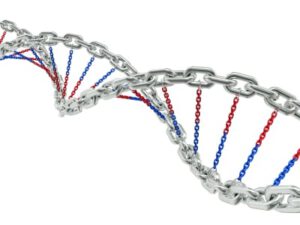
The story first broke in the summer of 2012 – two separate research groups, one from the University of Washington and the other from Stanford, announced within weeks of each other that they had successfully sequenced a human fetus and done so noninvasively.
Scientist Jacob O Kitzman, who led the University of Washington study, sequenced the fetal genome by analyzing a blood sample from the mother and a saliva sample from the father, while H. Christina Fan, leader of the Stanford study, just analyzed a blood sample from the mother.
By sequencing DNA from one or both parents and applying some computational tricks, these researchers were able to decode the genome sequence of the fetus. Their approach was possible because a small but very measurable percentage of DNA found in a pregnant mother’s bloodstream comes from the fetus.
At the ASHG 2012 meeting earlier this month, we heard first hand from Kitzman about their study. When they sequenced the pregnant mother’s plasma (a component of blood) they found that 87 percent of the DNA was of maternal origin and 13 percent was of fetal origin. When they compared their decoded genome to the actual genome of the fetus, which they sequenced using umbilical cord blood collected at birth, their accuracy was around 98 percent for most regions of the genome.
Noninvasive sequencing of human fetuses holds clinical utility. Since the approaches pioneered by Kitzman and Fan don’t rely on amniocentesis or chorionic villous sampling (CVS) for obtaining fetal DNA, they do not pose a risk to the developing fetus. Both amniocentesis and CVS are invasive procedures that carry a small risk of miscarriage.
Noninvasive fetal sequencing is also clinically useful because it provides a whole genome’s worth of information.
Some might wonder how it’s different from the relatively new blood-based screen that some are calling “the Down syndrome test.” This test, already commercially available, only requires a sample of the mother’s blood and is therefore non-invasive. But it differs from fetal sequencing because it only detects large chromosomal abnormalities – for instance having an extra chromosome, which occurs with Down syndrome. In contrast, fetal sequencing detects both chromosomal abnormalities as well as very small mutations like those causing single-gene disorders like cystic fibrosis. Fetal sequencing can also detect “de novo” mutations, changes in DNA that are not inherited from parents but instead occur very early in the course of a person’s life and can also cause disease.
But it’s likely going to take some time before fetal sequencing is actually offered to the general public. The costs need to drop significantly – it’s currently around $20,000-$50,000 per fetal genome. More work is also needed to refine the approach and improve the accuracy.
For this study Kitzman drew a blood sample when the fetus was around 18 weeks of gestation, but scientists expect the test to become available for women who are in earlier stages of pregnancy, for instance during the first trimester.
As with traditional prenatal screening such as amniocentesis and chorionic villus sampling (CVS), fetal sequencing can predict a serious medical condition. Fetal sequencing goes further, however, and may enable parents to obtain a rough prediction of traits such as the future eye color of the fetus. If current trends continue, some prospective parents will want such information, while others will prefer to wait until after the baby is born to learn about medical and non-medical conditions. The utility of this test and the decision to use it will depend a great deal on the test’s accuracy, which currently isn’t very high. But it’s clear that testing options for prospective parents will continue to grow in number and complexity.